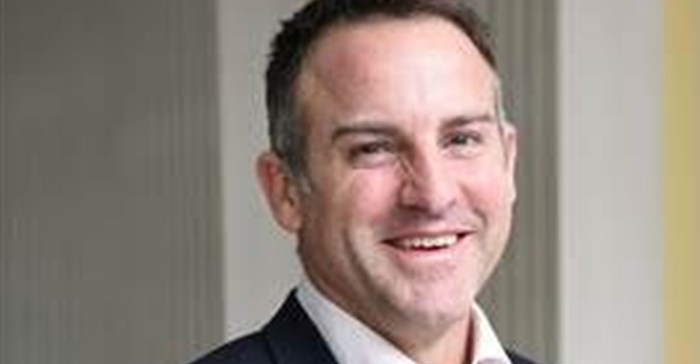
Subscribe & Follow
#AfricaMonth
In the news
It's all going to the dogs

While these two principles seem patently obvious, they can be challenging to implement, even for the most experienced investor. This is because of a fundamental vulnerability in the human psyche: the herd instinct. But, for disciplined and resilient investors, taking advantage of market mispricing to buy low by investing in 50-cent-in-the-rand opportunities, is an investment strategy that offers excellent potential for long-term returns.
At a market level, the herd instinct refers to the tendency of investors to crowd into winning stocks that are loved by the market, where investors chase envisaged growth opportunities with the effect of pushing valuation multiples and prices beyond reasonable levels. This leads to these loved shares becoming expensive, trapping the unwary into buying high, and increasing the risk of disappointment.
Equally, investors overreact with dejection to stocks that are considered to have poor prospects, leading to low ratings, with prices often dropping below fair levels. But, through the gradual process of mean reversion, these “unloved” or depressed shares, the so-called dogs of the market, have the capacity to surprise on the upside, recovering their fair value and, in so doing, rewarding patient investors with outsized returns. As Seth Klarman, founder of the Baupost Group, puts it: “At its core … [investing is] … the marriage of a contrarian streak and a calculator.”
Putting theory to the test
To test these investment arguments, we began building the SuperDogs portfolio in 1996, seeking out good – and sometimes great – companies at unloved prices, or firms that reflected modest valuation multiples.
In the first year of forming the portfolio, diversification was ensured by investing in companies from each of the main financial and industrial sub-sectors on the Johannesburg Stock Exchange (JSE), making for 18 sectors in total. Separating the dogs from the duds, required that the firms selected were profitable, had at least a three-year history on the market, sported respectable balance sheets, were backed by viable operations and boasted a history of paying regular dividends.
The result was the crafting of a 54-share portfolio with an attractive price-to-earnings multiple of 6.8 times. By comparison, the benchmark JSE Financial and Industrial Index (FINDI) displayed a price-to-earnings multiple of 16.0 times, meaning that investors in the index were paying more to receive lower earnings. Added to this, the index had a comparatively unattractive 1.9% dividend yield compared to the 3.0% dividend yield on the SuperDogs portfolio. On valuation, SuperDogs won hands down, and over the next 12 months the SuperDogs portfolio gained 31.0% against the index’s return of 2.1%.
As with all investments, it’s never all smooth sailing. The Asian and Russian crises of late 1997 and 1998 saw the SuperDogs portfolio fall 17.6% compared to the FINDI’s 9.9% decline. Later, the portfolio slumped during the 2008 global financial crisis and the average annual return for the period between 2006 and 2008 was 8.8%, below the FINDI’s 10.3% and just ahead of inflation at 8.4%.
SuperDogs is not for the faint-hearted. Rather, the portfolio is built for investors who stay the course. This patient capital has been rewarded with outsized returns, including a cumulative portfolio gain of 72.8% in the three years following the 2008 crisis.
All investments go through cycles, and the past four years have been marked by subdued returns. However, it is the long-term that matters. Over the 23 years from 1996 to 2018, the SuperDogs strategy has rewarded astute investors, achieving an average annual return of 19.8% – substantially ahead of the FINDI average of 13.9%, and more than three times the inflation rate of 5.8% pa.
An investment of R100,000 in the FINDI in 1996 would be worth R1.4 million today. The SuperDogs strategy would have grown the same investment to R3.9m – nearly three times the value delivered by the market.
What does the success of SuperDogs teach us?
Although past performance is no guarantee of future returns, SuperDogs’ impressive investment record offers at least two key lessons for investors:
- First, while Warren Buffet’s extraordinary investment career has been built on the back of buying wonderful companies at fair prices, SuperDogs’ results suggest that there is an equally strong case for buying fair companies at wonderful prices.
Between 1996 and 2018, the average price-to-earnings multiple on the SuperDogs portfolio has been 7.1 times compared to the average FINDI multiple of 15.8 times. This means that for every rand the average investor has paid for a company’s earnings, the SuperDogs portfolio investor has paid only 45 cents.
Additionally, the portfolio has carried a higher average dividend yield of 3.7% versus the FINDI’s 2.6%, offering investors the benefit of being paid to wait.
- While year-on-year returns are almost impossible to anticipate, buying solid companies at wonderful prices, and giving investments the time they need to work, translates into a powerful compounding machine.
This approach produced 39-times initial capital for the SuperDogs investor who stayed the course over 23 years. By contrast, the average investor owning the market index would have received just 14-times money over the same period.
There is no way to know whether 2019 will be the year that delivers outsized returns on our portfolio. Rather, what SuperDogs investors know from 23 years of evidence is that a sound investment strategy, patience and discipline, coupled with valuation as a catalyst, is a formula for powerful portfolio results.
About Adrian Saville
Dr Adrian Saville is the chief executive of Cannon Asset ManagersRelated
EXCLUSIVE: Halo and Demographica launch new agency with Mike Stopforth at the helm 8 May 2025 Leading the African AI revolution: AAAI and CAMM forge a strategic partnership 7 Mar 2025 Set your creative career on fire with the 2025 ACT scholarship 12 Feb 2025 Daily Maverick's Marianne Thamm brings her performance journalism show to Joburg 26 Apr 2024












